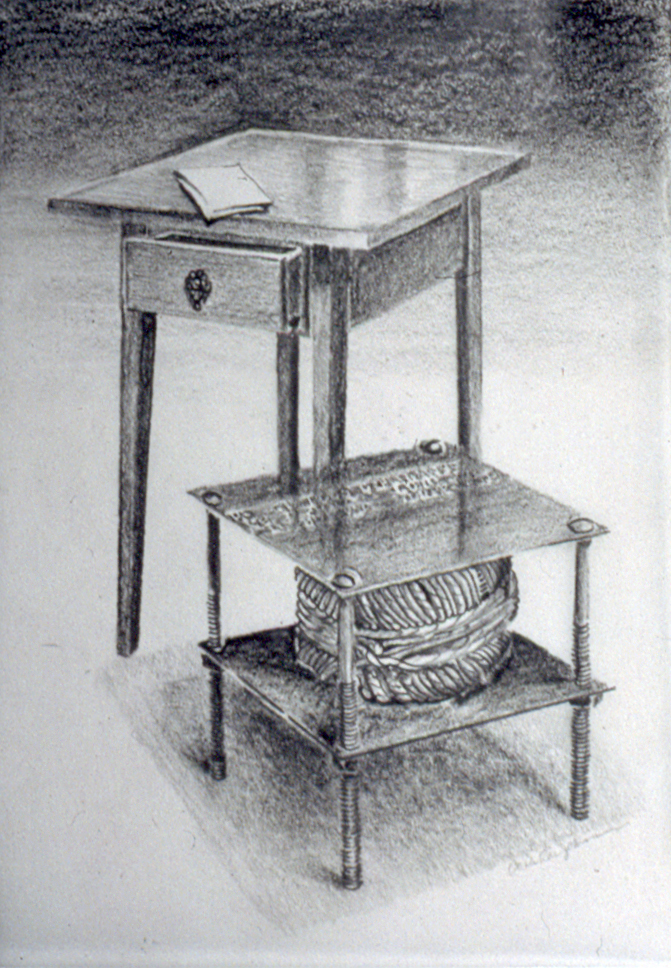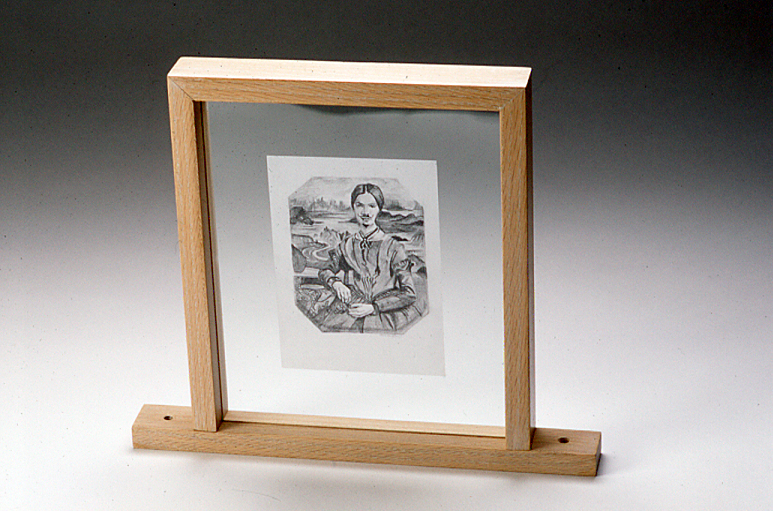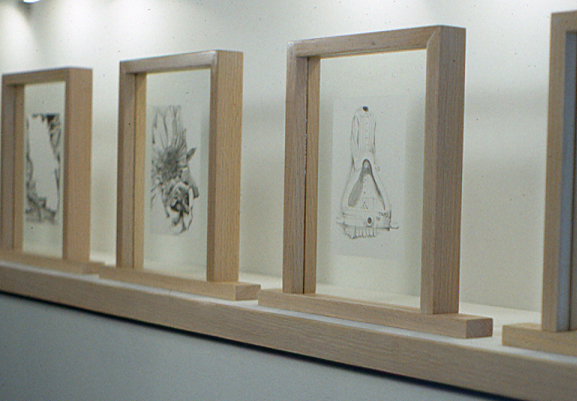Artist Statement
Most artists find encouragement and inspiration from the great creative minds and souls of their predecessors. I have for many years looked to writers, artists, and musicians whose unique voices and visions have had a profound effect on my creative life. Two of the most inspiring minds I have ever encountered are Emily Dickinson and Marcel Duchamp.
Emily Dickinson Meets Marcel Duchamp
My fantasy, realized in this work, has been to bring them together: a meeting of the minds, a conversation between equals, a challenge to their spirits. Thus, this first portion of The Séance Series nine includes drawings and a sculptural “tableau” referencing an imagined meeting between Emily and Marcel. In the initial stages of conception, part of the challenge and mischief of such a project lay in the astonishing dissimilarities of these individuals. Two more different personalities and creative styles could not, I thought, be imagined. In my research for this project, I pored over volumes of biographical information as well as their poetry and art. To my delight, I found that there were many points of contact for Emily and Marcel.
Here are a few points of contact for the creative lives of Emily Dickinson and Marcel Duchamp.
- Both poet and artist produced much of their work in seclusion, if not secrecy. Emily Dickinson’s family and friends were astounded at the volume of poetry discovered after her death. Marcel Duchamp demanded a high level of solitude for his creative process and worked in secret for the last twenty years of his life on a large-scale installation unknown to the world until after his death.
- Elusive and enigmatic, Emily and Marcel continue to puzzle their historians, biographers, and critics.
- Both Emily and Marcel were “originals,” their mature work being without precedent.
- In both cases, the work and the ideas were very much ahead of their times and continue to influence contemporary poets and artists.
- The work of these two artists remained essentially apolitical in their lifetimes. Emily Dickinson lived through the American Civil War and Duchamp through two world wars, though direct reference to these events is hardly evident in the poetry or the art.
- She eschewed publication and he, the commercialized art establishment.
- Each, in her/his own way, dealt with the dimension of time and with the erotic.
- Both maintained a high degree of selectivity in their work, insisting on a profound simplicity and an economy of means in both life and art.
The drawings reflect visual coincidences I would never have thought existed. In the iconography of poet and artist, I found formal and conceptual synchronicities as delightful as they were unexpected.
In the sculpture I have created a tableau in which these two originals can meet, as they never did in life. (Emily Dickinson died in 1886, and Marcel Duchamp was born in 1887.) The game of chess became a serious obsession with Duchamp until eventually it seemed to eclipse his making of art. Thus, Emily and Marcel sit down to a game of chess. The only “piece” is Emily’s loaded gun.













